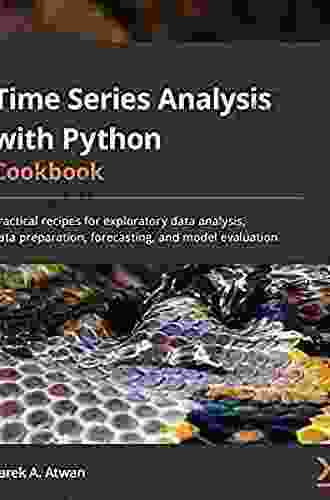Mastering Quantitative Comparisons and Data Interpretation for the GRE: A Manhattan Prep Strategy Guide

The Graduate Record Examinations (GRE) is a standardized test that is required for admission to many graduate schools around the world. The GRE consists of three sections: Verbal Reasoning, Quantitative Reasoning, and Analytical Writing. The Quantitative Reasoning section of the GRE tests your ability to solve math problems. Two question types that you will encounter on the Quantitative Reasoning section of the GRE are Quantitative Comparisons and Data Interpretation.
In this article, we will provide you with a comprehensive guide to Quantitative Comparisons and Data Interpretation questions on the GRE. We will cover the different types of questions that you can expect to see, as well as the strategies that you can use to solve them.
Quantitative Comparison questions are designed to test your ability to compare two quantities. The two quantities will be presented in different formats, such as numbers, fractions, decimals, or percents. You will need to determine which quantity is greater, less than, or equal to the other.
4 out of 5
| Language | : | English |
| File size | : | 3204 KB |
| Text-to-Speech | : | Enabled |
| Screen Reader | : | Supported |
| Enhanced typesetting | : | Enabled |
| Print length | : | 185 pages |
There are three types of Quantitative Comparison questions:
- Simple Comparisons: These questions are straightforward comparisons of two quantities. For example, you might be asked to compare the value of 2/3 to 0.75.
- Medium Comparisons: These questions are more difficult than simple comparisons. They may involve more complex numbers or units. For example, you might be asked to compare the volume of a cube with a side length of 5 cm to the volume of a sphere with a radius of 3 cm.
- Hard Comparisons: These questions are the most difficult type of Quantitative Comparison question. They may involve multiple steps or complex concepts. For example, you might be asked to compare the speed of a car traveling at 60 mph to the speed of a train traveling at 90 km/h.
To solve Quantitative Comparison questions, you can use the following strategies:
- Estimate the values of the quantities. This will help you to narrow down your choices.
- Convert the quantities to a common unit. This will make it easier to compare them.
- Use a grid or table to organize the information. This can help you to visualize the relationship between the quantities.
Data Interpretation questions are designed to test your ability to interpret data from tables, graphs, and charts. The data will be presented in a variety of formats, such as bar graphs, line graphs, pie charts, and scatterplots. You will need to be able to read the data and answer questions about it.
There are three types of Data Interpretation questions:
- Table Interpretation: These questions ask you to interpret data from a table. For example, you might be asked to find the average value of a column or to compare the values in two different rows.
- Graph Interpretation: These questions ask you to interpret data from a graph. For example, you might be asked to find the slope of a line or to identify the trend in a scatterplot.
- Chart Interpretation: These questions ask you to interpret data from a chart. For example, you might be asked to find the percentage of respondents who answered a certain question or to compare the data in two different charts.
To solve Data Interpretation questions, you can use the following strategies:
- Read the data carefully. Make sure that you understand what the data is showing.
- Identify the key variables. These are the variables that are being compared or analyzed.
- Estimate the values. This will help you to narrow down your choices.
- Use a grid or table to organize the information. This can help you to visualize the relationship between the variables.
The best way to prepare for the GRE Quantitative Reasoning section is to practice. Here are a few practice questions to help you get started:
Quantitative Comparisons:
- Which is greater, 2/3 or 0.75?
- Which is greater, the volume of a cube with a side length of 5 cm or the volume of a sphere with a radius of 3 cm?
- Which is greater, the speed of a car traveling at 60 mph or the speed of a train traveling at 90 km/h?
Data Interpretation:
- The following table shows the number of students who scored in each range on a standardized test.
| Score Range | Number of Students | |---|---| | 0-10 | 10 | | 11-20 | 20 | | 21-30 | 30 | | 31-40 | 40 | | 41-50 | 50 |
a. What percentage of students scored in the range of 21-30? b. What is the average score of the students?
- The following graph shows the relationship between the number of hours studied and the score on a standardized test.
[Image of a graph showing a positive correlation between the number of hours studied and the score on a standardized test]
a. What is the slope of the line? b. What is the trend in the graph?
- The following chart shows the percentage of respondents who answered "yes" to a certain question.
[Image of a chart showing that 60% of respondents answered "yes" to a certain question]
a. What percentage of respondents answered "yes"? b. How many respondents answered "no"?
Quantitative Comparisons and Data Interpretation questions are an important part of the GRE Quantitative Reasoning section. By understanding the different types of questions and the strategies for solving them, you can improve your score on the GRE and increase your chances of getting into the graduate school of your choice.
4 out of 5
| Language | : | English |
| File size | : | 3204 KB |
| Text-to-Speech | : | Enabled |
| Screen Reader | : | Supported |
| Enhanced typesetting | : | Enabled |
| Print length | : | 185 pages |
Do you want to contribute by writing guest posts on this blog?
Please contact us and send us a resume of previous articles that you have written.
 Fiction
Fiction Non Fiction
Non Fiction Romance
Romance Mystery
Mystery Thriller
Thriller SciFi
SciFi Fantasy
Fantasy Horror
Horror Biography
Biography Selfhelp
Selfhelp Business
Business History
History Classics
Classics Poetry
Poetry Childrens
Childrens Young Adult
Young Adult Educational
Educational Cooking
Cooking Travel
Travel Lifestyle
Lifestyle Spirituality
Spirituality Health
Health Fitness
Fitness Technology
Technology Science
Science Arts
Arts Crafts
Crafts DIY
DIY Gardening
Gardening Petcare
Petcare Jack Whyte
Jack Whyte Daniel Isberner
Daniel Isberner Ed Gruver
Ed Gruver Sandra Brown
Sandra Brown David Cockburn
David Cockburn Teresa Denton
Teresa Denton Robert T Kiyosaki
Robert T Kiyosaki James Duggan
James Duggan Matthew Cronin
Matthew Cronin Malcolm Williams
Malcolm Williams Mark Rashid
Mark Rashid Kiera Cass
Kiera Cass Monica Gribben
Monica Gribben Jimmy Roberts
Jimmy Roberts Christine Lion
Christine Lion Tao Le
Tao Le Cheryl Marlene
Cheryl Marlene Candace Walsh
Candace Walsh Three Over Eight Learning
Three Over Eight Learning Sheila Willcox
Sheila Willcox Laura J Snyder
Laura J Snyder Michelle Garnett
Michelle Garnett Cal Pater
Cal Pater Ian Tuhovsky
Ian Tuhovsky Kenneth C Roebuck
Kenneth C Roebuck Sergey K Aityan
Sergey K Aityan Derek Cheung
Derek Cheung Sally Moran
Sally Moran Nicholas Bjorn
Nicholas Bjorn Richard Headstrom
Richard Headstrom Aaron Oster
Aaron Oster Tania Aebi
Tania Aebi Jennifer Niven
Jennifer Niven Greg Wolfe
Greg Wolfe Tiffany Loggins Psyd
Tiffany Loggins Psyd Phillip Stephen Schulz
Phillip Stephen Schulz Yaron Seidman
Yaron Seidman Mary J Macleod
Mary J Macleod Richard J Foster
Richard J Foster Nicole Howard
Nicole Howard Jonathan Howard Md
Jonathan Howard Md Rinoa
Rinoa Jason Brown
Jason Brown James Kaiser
James Kaiser Michael Eric Dyson
Michael Eric Dyson Dr Barbara Sorrels
Dr Barbara Sorrels 1st Ed 2019 Edition Kindle Edition
1st Ed 2019 Edition Kindle Edition Bruce Sutherland
Bruce Sutherland William Shakespeare
William Shakespeare Julia Englund Strait Phd
Julia Englund Strait Phd Taste Of Home
Taste Of Home Scott Wilson
Scott Wilson Detlev Piltz
Detlev Piltz Terri Jean
Terri Jean Iskcon Revival Movement
Iskcon Revival Movement Corinne Brown
Corinne Brown Rand Cardwell
Rand Cardwell Serena Williams
Serena Williams Diondre Mompoint
Diondre Mompoint Roland Nyns
Roland Nyns Jeannie Tyrrell
Jeannie Tyrrell Norm Flayderman
Norm Flayderman Nfhs
Nfhs Mantak Chia
Mantak Chia Lieven Vandenberghe
Lieven Vandenberghe Kevin C Kelleher Md Md
Kevin C Kelleher Md Md Bridie Gallagher
Bridie Gallagher John V Petrocelli
John V Petrocelli Asaf Rozanes
Asaf Rozanes Charles Hooton
Charles Hooton Silvan S Schweber
Silvan S Schweber Chuck Carlson
Chuck Carlson Charmaine Mckissock
Charmaine Mckissock Sam Dogra
Sam Dogra Ron Woldoff
Ron Woldoff Gao Yisheng
Gao Yisheng Peter Mcdougall
Peter Mcdougall Felix Bittmann
Felix Bittmann Cecilia Chrapkowska
Cecilia Chrapkowska Karen Gershowitz
Karen Gershowitz Jen Rose Smith
Jen Rose Smith Helen Corcoran
Helen Corcoran Deirdre A Scaggs
Deirdre A Scaggs Michael Conway
Michael Conway Dr Ray Makar
Dr Ray Makar Richard Williams
Richard Williams Michael R Canfield
Michael R Canfield Theodore Gray
Theodore Gray Priscilla T Brown
Priscilla T Brown Lawrence M Krauss
Lawrence M Krauss L Waxy Gregoire
L Waxy Gregoire Robert J Sternberg
Robert J Sternberg Wendy Suzuki
Wendy Suzuki Marc P Steinberg
Marc P Steinberg Elena Lawson
Elena Lawson Derek Johnson
Derek Johnson Kayvan Shokrollahi
Kayvan Shokrollahi Sacha Koborsi Tadros
Sacha Koborsi Tadros Graham Denton
Graham Denton Frank Giampaolo
Frank Giampaolo Steven A Finkler
Steven A Finkler Lee Mcintyre
Lee Mcintyre Julie Dubrouillet
Julie Dubrouillet Mark Vonnegut
Mark Vonnegut Melissa Gomes
Melissa Gomes Leigh Calvez
Leigh Calvez Loralee Leavitt
Loralee Leavitt David Franklin
David Franklin Gary Letcher
Gary Letcher Antti Laaksonen
Antti Laaksonen William Pitts
William Pitts John Gierach
John Gierach Ceara Comeau
Ceara Comeau Steve Leonard
Steve Leonard Martin Toms
Martin Toms Lyn Millner
Lyn Millner Kim Heldman
Kim Heldman Rohan Agarwal
Rohan Agarwal Fred Medina
Fred Medina John Mccollister
John Mccollister Julia Shaw
Julia Shaw Kevin Ticen
Kevin Ticen Peter N Peregrine
Peter N Peregrine Jennifer Mccully
Jennifer Mccully Bob Forman
Bob Forman Print Replica Kindle Edition
Print Replica Kindle Edition Larry Pardey
Larry Pardey Oluwatosin Adebanjo Ore
Oluwatosin Adebanjo Ore Shane Burcaw
Shane Burcaw Mones Abu Asab
Mones Abu Asab Second Edition New Edition Updated Revised...
Second Edition New Edition Updated Revised... Tiffany Vincent
Tiffany Vincent Jim Wilson
Jim Wilson Diane Ravitch
Diane Ravitch Culture Smart
Culture Smart Francis Jonah
Francis Jonah Jill Margaret Shulman
Jill Margaret Shulman Sylvia Mercedes
Sylvia Mercedes Chantal Sicile Kira
Chantal Sicile Kira Bob Harig
Bob Harig Brian Zepka
Brian Zepka Marley Dias
Marley Dias Tom Billinge
Tom Billinge Joseph Campbell
Joseph Campbell Jakub Marian
Jakub Marian Raymond Barrett
Raymond Barrett Mary Beard
Mary Beard Michele Riva
Michele Riva Christian Smith
Christian Smith Grace Elizabeth Hale
Grace Elizabeth Hale Rick Sapp
Rick Sapp Joe Hendershott
Joe Hendershott Angela Stevens
Angela Stevens Josephine Diebitsch Peary
Josephine Diebitsch Peary Tara Lazar
Tara Lazar David Mayer
David Mayer Lewis Howes
Lewis Howes David L Cook
David L Cook Greg Mcmillan
Greg Mcmillan Jeff Carreira
Jeff Carreira Christopher Setterlund
Christopher Setterlund Lily Field
Lily Field Jodi Magness
Jodi Magness Jared Hargrave
Jared Hargrave Robert Fisher
Robert Fisher Dinesh Kumar Goyal
Dinesh Kumar Goyal Tracy Moore
Tracy Moore Bob Thomas
Bob Thomas Mark E Johnson
Mark E Johnson Luke Jackson
Luke Jackson Fodor S Travel Guides
Fodor S Travel Guides Summer Batte
Summer Batte Stuart Firestein
Stuart Firestein Lewis Smile
Lewis Smile Timothy Alberino
Timothy Alberino Harmon Cooper
Harmon Cooper Tobias Macey
Tobias Macey 1st Ed 2020 Edition Kindle Edition
1st Ed 2020 Edition Kindle Edition Susanna Heli
Susanna Heli Robert Courland
Robert Courland Lou Kasischke
Lou Kasischke David Wescott
David Wescott Roger Kopanycia
Roger Kopanycia United States Government Us Army
United States Government Us Army Guy Gavriel Kay
Guy Gavriel Kay Daniel Friebe
Daniel Friebe Art Smith
Art Smith Language Guru
Language Guru Su Ad Abdul Khabeer
Su Ad Abdul Khabeer Haruki Murakami
Haruki Murakami Luke Humphrey
Luke Humphrey James Morgan Ayres
James Morgan Ayres Bradley Garrett
Bradley Garrett James Atkinson
James Atkinson Elena Kryuchkova
Elena Kryuchkova Bob Miller
Bob Miller Jessica Holsman
Jessica Holsman Karen Le Billon
Karen Le Billon Dave Pine
Dave Pine Diane Sticks Harsha
Diane Sticks Harsha Charles H Townes
Charles H Townes Curt Sampson
Curt Sampson Emma Fick
Emma Fick Diane Ehrensaft
Diane Ehrensaft Mark W Gaither
Mark W Gaither Jacob Paul Patchen
Jacob Paul Patchen David Seidman
David Seidman Immigration Consult
Immigration Consult Karen George
Karen George Nate Schweber
Nate Schweber Robert T Pennock
Robert T Pennock Darwin V Ellis
Darwin V Ellis Alan Pearce
Alan Pearce Julie Des Jardins
Julie Des Jardins James Mcmullan
James Mcmullan Maggie Smith
Maggie Smith Joanna Breyer
Joanna Breyer Craig Callender
Craig Callender Nurse Academy
Nurse Academy Brian Libby
Brian Libby Philip Slayton
Philip Slayton Matthias Biehl
Matthias Biehl Mami Wata
Mami Wata William Spencer
William Spencer Rod Baker
Rod Baker Bill Nowlin
Bill Nowlin Jane Adams
Jane Adams Fiona Danks
Fiona Danks Cindy C Bennett
Cindy C Bennett Peter Ralston
Peter Ralston Mahzarin R Banaji
Mahzarin R Banaji Bill Nason
Bill Nason Jerry A Coyne
Jerry A Coyne Marion Zimmer Bradley
Marion Zimmer Bradley 1st Ed 2021 Edition Kindle Edition
1st Ed 2021 Edition Kindle Edition Eric R Dodge
Eric R Dodge Lisa Takeuchi Cullen
Lisa Takeuchi Cullen Stephen Armstrong
Stephen Armstrong Raghuram Rajan
Raghuram Rajan Tania Marshall
Tania Marshall Daphne Adler
Daphne Adler Megan Miller
Megan Miller Ronald D Mcelroy
Ronald D Mcelroy Brendan Donley
Brendan Donley Don Currie
Don Currie Kelly Koerner
Kelly Koerner Sharon M Ravitch
Sharon M Ravitch Brittany Noelle
Brittany Noelle Bob Gaines
Bob Gaines Sian O Gorman
Sian O Gorman Matt Harrison
Matt Harrison Lori Foster
Lori Foster Ziya Tong
Ziya Tong Jimmy Cornell
Jimmy Cornell Chris Cheng
Chris Cheng N M J Woodhouse
N M J Woodhouse Bob Brister
Bob Brister Lewis Morris
Lewis Morris Michael Kulikowski
Michael Kulikowski Jayne Storey
Jayne Storey Rob Walker
Rob Walker Julietta Suzuki
Julietta Suzuki Nick Muxlow
Nick Muxlow Sevki Kuruoglu
Sevki Kuruoglu Lianna Marie
Lianna Marie Brad Walker
Brad Walker Paddy Ashdown
Paddy Ashdown Sigmund Freud
Sigmund Freud Ricardo Pompa
Ricardo Pompa Jennifer Boyle
Jennifer Boyle Paul Orland
Paul Orland Monica Mcgoldrick
Monica Mcgoldrick Katherine A Dettwyler
Katherine A Dettwyler Tom Stienstra
Tom Stienstra Sherman Alexie
Sherman Alexie Zach Alexander
Zach Alexander Elizabeth Bishop
Elizabeth Bishop Lynn Rosen
Lynn Rosen George M Church
George M Church Julie Kratz
Julie Kratz Gordon H Chang
Gordon H Chang Lisa Mckay
Lisa Mckay Ted Kerasote
Ted Kerasote Catherine Ryan Gregory
Catherine Ryan Gregory Jennie Naidoo
Jennie Naidoo Jason R Briggs
Jason R Briggs Doris Pilkington
Doris Pilkington Bob Motley
Bob Motley Jack Cavanaugh
Jack Cavanaugh Tracy Deonn
Tracy Deonn Mathew Tekulsky
Mathew Tekulsky Laura Freberg
Laura Freberg Eva Ibbotson
Eva Ibbotson Tom Bisio
Tom Bisio Robert Young Pelton
Robert Young Pelton Charles Johnson
Charles Johnson Paula Petrella
Paula Petrella Simeon Wright
Simeon Wright Jerry Darkes
Jerry Darkes Daniel Kahneman
Daniel Kahneman Booksumo Press
Booksumo Press Alan Anderson
Alan Anderson John Andrisani
John Andrisani Jennifer Pastiloff
Jennifer Pastiloff National Fastpitch Coaches Association
National Fastpitch Coaches Association Philip Kramer
Philip Kramer Jason Thalken
Jason Thalken Hettie Brittz
Hettie Brittz Scarlett Thomas
Scarlett Thomas John Horgan
John Horgan Dr Aviva Legatt
Dr Aviva Legatt Laurence D Houlgate
Laurence D Houlgate Russell Bryant
Russell Bryant Terry Mcmillan
Terry Mcmillan Robin Moore
Robin Moore Donald Hanley
Donald Hanley Holly Black
Holly Black Mike Evans
Mike Evans Nancy H Diepenbrock
Nancy H Diepenbrock Zola Levitt
Zola Levitt Collegiate Learning
Collegiate Learning 1st Edition Kindle Edition
1st Edition Kindle Edition Bradley Mayhew
Bradley Mayhew Glen Mourning
Glen Mourning Huan Yang
Huan Yang Jim Murphy
Jim Murphy Michael Kodas
Michael Kodas Marc Silver
Marc Silver Bobbi Conner
Bobbi Conner Carol Mccloud
Carol Mccloud Ed Viesturs
Ed Viesturs Kevin Williams
Kevin Williams David Murray
David Murray Lola Glass
Lola Glass Rachel Burgess
Rachel Burgess Jacqueline Kelleher
Jacqueline Kelleher Joe Tasker
Joe Tasker Linda Fairley
Linda Fairley Bob Morris
Bob Morris Camille Soulier
Camille Soulier Sifu Slim
Sifu Slim James Oseland
James Oseland Carlo Zen
Carlo Zen Kathryn Mcelroy
Kathryn Mcelroy Katherine Roberts
Katherine Roberts Ruth M Tappen
Ruth M Tappen James R Evans
James R Evans Jennifer L Lopez
Jennifer L Lopez Luisa Magarian
Luisa Magarian Pamela A Hays
Pamela A Hays Fr Vincent Lampert
Fr Vincent Lampert Nikki Glandon
Nikki Glandon Michael Loynd
Michael Loynd Borja Loma Barrie
Borja Loma Barrie Mia Reyes
Mia Reyes James Mooney
James Mooney Selma H Fraiberg
Selma H Fraiberg Matt Davids
Matt Davids J M Hofer
J M Hofer Dan Gable
Dan Gable Rachel Marie Martin
Rachel Marie Martin Brenda Hiatt
Brenda Hiatt Ed Palattella
Ed Palattella William R Miller
William R Miller Connecticut Forest And Park Association
Connecticut Forest And Park Association Lynn A Struve
Lynn A Struve Kindle Edition
Kindle Edition Jill Krause
Jill Krause John Skinner
John Skinner Karen Ehman
Karen Ehman Tony Hansen
Tony Hansen Logan Thompson
Logan Thompson Richard Bach
Richard Bach Gregg Michaelsen
Gregg Michaelsen Jane Watkins
Jane Watkins House Of Talent
House Of Talent Bob Meehan
Bob Meehan Lowell Skoog
Lowell Skoog Tim Swanwick
Tim Swanwick Haider Warraich
Haider Warraich Brook Waters
Brook Waters Staff Of The Harvard Crimson
Staff Of The Harvard Crimson George Heineman
George Heineman Jessica Mayer Koren
Jessica Mayer Koren Herbert Wolverson
Herbert Wolverson Carol A Dahir
Carol A Dahir S Connolly
S Connolly Bruce Kershner
Bruce Kershner Barry Lewis
Barry Lewis N L Mclaughlin
N L Mclaughlin Scott Waldie
Scott Waldie Django Wexler
Django Wexler Randall M Rueff
Randall M Rueff Kazumi Tabata
Kazumi Tabata Tehlor Kay Mejia
Tehlor Kay Mejia Clinton Dobbins
Clinton Dobbins Nando Parrado
Nando Parrado David Christian
David Christian Michael Inden
Michael Inden Michael Hoy
Michael Hoy Fran Davis
Fran Davis Ross Mccluney
Ross Mccluney Janet Evanovich
Janet Evanovich Jorge Croda
Jorge Croda Steven Trustrum
Steven Trustrum Maia Weinstock
Maia Weinstock Becca Anderson
Becca Anderson Leo Baker
Leo Baker Kristin Plain
Kristin Plain Christie Aschwanden
Christie Aschwanden Shaana Berman
Shaana Berman David Sammel
David Sammel Martin Gardner
Martin Gardner Jack Henderson
Jack Henderson Dan Hamilton
Dan Hamilton Jim Thompson
Jim Thompson Blessing Agunloye
Blessing Agunloye Joni Levine
Joni Levine George G Morgan
George G Morgan Eduardo Montano
Eduardo Montano Hugh Marriott
Hugh Marriott Melissa Marr
Melissa Marr Richard Grant
Richard Grant Zecharia Sitchin
Zecharia Sitchin Leah Hager Cohen
Leah Hager Cohen Peter Byrne
Peter Byrne James Lovegrove
James Lovegrove Breann Blehm
Breann Blehm Philip A Moore
Philip A Moore Lynn E Ponton
Lynn E Ponton Dan Wowak
Dan Wowak Smart Reads
Smart Reads Jody Hedlund
Jody Hedlund Pedro Urvi
Pedro Urvi Peter Nabokov
Peter Nabokov Theodore Dalrymple
Theodore Dalrymple Sleiman Azizi
Sleiman Azizi Pat Harvey
Pat Harvey Tom Mccoy
Tom Mccoy Xiran Jay Zhao
Xiran Jay Zhao Hecateus Apuliensis
Hecateus Apuliensis Elizabeth Hay
Elizabeth Hay Paul Bellow
Paul Bellow Robert Farris Thompson
Robert Farris Thompson Cliff Jacobson
Cliff Jacobson Stephanie J Scott
Stephanie J Scott Patrisia Gonzales
Patrisia Gonzales John Sabino
John Sabino Carrie Rogers Whitehead
Carrie Rogers Whitehead
Light bulbAdvertise smarter! Our strategic ad space ensures maximum exposure. Reserve your spot today!

 Rudyard KiplingWhen Our Grown Kids Disappoint Us: A Comprehensive Guide for Navigating the...
Rudyard KiplingWhen Our Grown Kids Disappoint Us: A Comprehensive Guide for Navigating the... Paul ReedFollow ·8.1k
Paul ReedFollow ·8.1k Carson BlairFollow ·15.8k
Carson BlairFollow ·15.8k Junichiro TanizakiFollow ·4.3k
Junichiro TanizakiFollow ·4.3k Harvey HughesFollow ·11.5k
Harvey HughesFollow ·11.5k Virginia WoolfFollow ·19.1k
Virginia WoolfFollow ·19.1k Levi PowellFollow ·11.2k
Levi PowellFollow ·11.2k Greg FosterFollow ·2.7k
Greg FosterFollow ·2.7k Chuck MitchellFollow ·4.1k
Chuck MitchellFollow ·4.1k

 Dennis Hayes
Dennis HayesMystic Legend and His Epic Crusade Into the New World: A...
The story of Mystic Legend is...

 Braden Ward
Braden WardThe Wandering Fire: A Captivating Fantasy Epic in the...
: A Realm of Enchantment and...

 Nathaniel Hawthorne
Nathaniel HawthorneStarstruck Brenda Hiatt: A Journey to Stardom
Brenda Hiatt's journey to...

 Clark Campbell
Clark Campbell50 Enchanting Towns and Cities for Your Fantasy Tabletop...
Are you a dungeon master looking for the...

 W.B. Yeats
W.B. Yeats15 Natural Ways to Fix PCOS (Polycystic Ovary Syndrome)
Polycystic ovary syndrome (PCOS) is a hormonal...
4 out of 5
| Language | : | English |
| File size | : | 3204 KB |
| Text-to-Speech | : | Enabled |
| Screen Reader | : | Supported |
| Enhanced typesetting | : | Enabled |
| Print length | : | 185 pages |












